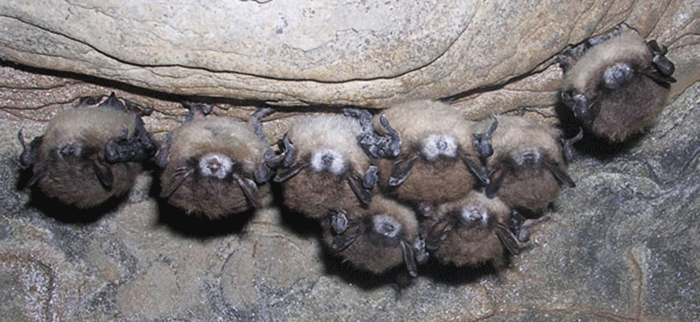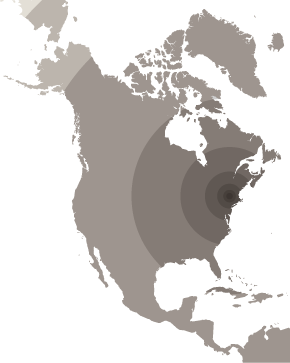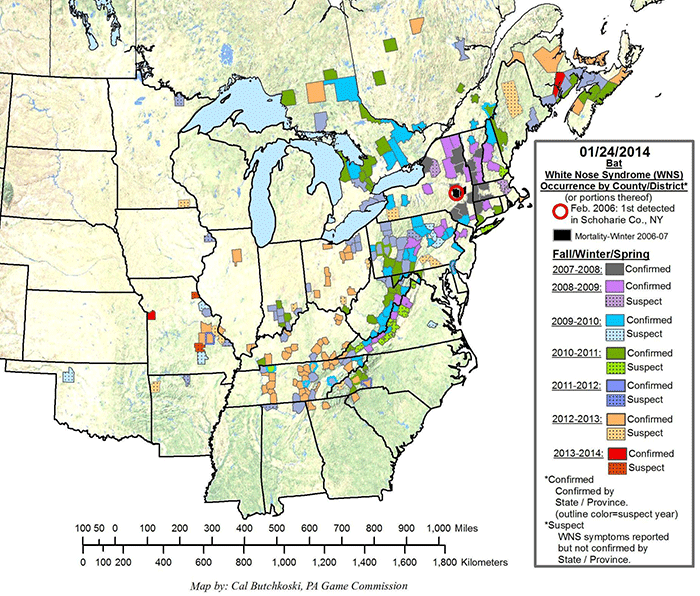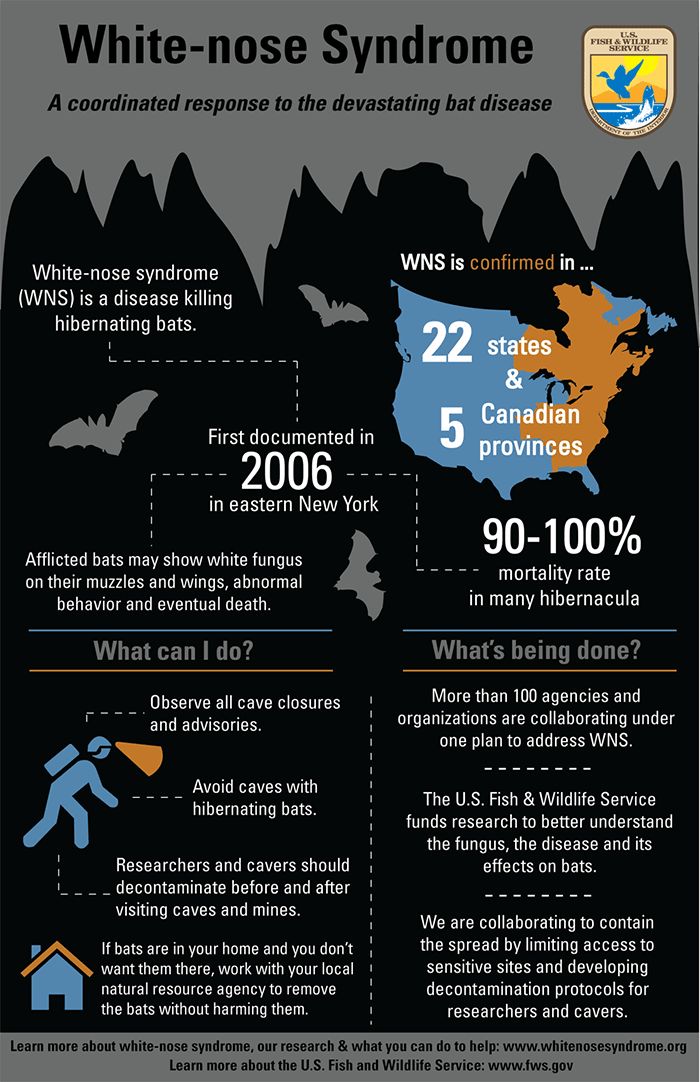In 2006, massive die-offs of hibernating bats was first detected. Estimates quickly found that 75% or more of known bats populations had died due to a mysterious new ailment that has since identified as White-Nose Syndrome (WNS). Scientists put total bat deaths in the millions and some local populations experienced die-offs of 80-90%. Well known and protected bat winter hibernation locations in New York were found infected with thousands of sick and dying bats. Among these was the Graphite Mine in Hague, a site protected by The Nature Conservancy, and other well known hibernacula like the Howe Caverns and Schoharie Caverns.
Bats hibernate in specific locations from October – April and are believed to return to these caves for years. They cluster together in densities of up to 300 bats per square foot. WNS is a white fungus on the muzzles and wings of affected bats. Since initial detection in 2006, WNS has stunned natural resource agencies and scientists by its swift spread from New York and New England to the Great Lakes and Midwest.
The United States Geological Survey describes WNS like this:
“To determine if bats are affected by white-nose syndrome, scientists look for a characteristic microscopic pattern of skin erosion caused by P. destructans. Field signs of WNS can include visible white fungal growth on the bat’s muzzle and/or wing tissue, but this is not a reliable indicator. Infected bats also often display abnormal behaviors in their hibernation sites (hibernacula), such as movement toward the mouth of caves and daytime flights during winter. These abnormal behaviors may contribute to the untimely consumption of stored fat reserves causing emaciation, a characteristic documented in a portion of the bats that die from WNS.”
In New York, four species of bats exist and all have been impacted by WNS. Indiana bats (Myotis sodalist) is the species protected at the Graphite mine, but other bats use this site too. The Indiana bat is a medium sized mouse-eared bat native to North America. It’s a state and federally endangered species, and many consider it the most vulnerable to WNS. The NYS Department of Environmental Conservation (DEC) estimated that more than half of the bats in the Adirondack hibernacula have been lost.
In addition to the Indiana bat, the Eastern pipistrelle (Perimyotis subflavus), northern long-eared (Myotis septentrionalis) and little brown bats (Myotis lucifugus) all hibernate together and are all suffering from WNS. The little brown bat is the most common hibernating species in New York, and has sustained the largest number of deaths.
Bat populations are highly stable. Bats are low breeders with just one “pup” born to a female each year. Though bats live for many years when healthy, it will take decades for the bat population to return to levels prior to WNS among the small populations that for some reason have not not been affected by this disease.
WNS is believed to be spread bat-to-bat, but can also be spread on the clothes and equipment that humans use as the visit different caves. As WNS has spread it has devastated bat populations. A national response plan to and contain the spread has been adopted.
The long-term impacts of WNS are not yet fully known. Healthy bat populations consume billions of insect each year and the consequences of the loss of the great majority of bats to the ecosystems in the Adirondacks and New York is not fully understood. Some calculate that “insect suppression services” provided by bats are worth billions of dollars to agriculture.
Below is a public education poster from the U.S. Fish & Wildlife Service about what can be done to prevent spreading WNS.




